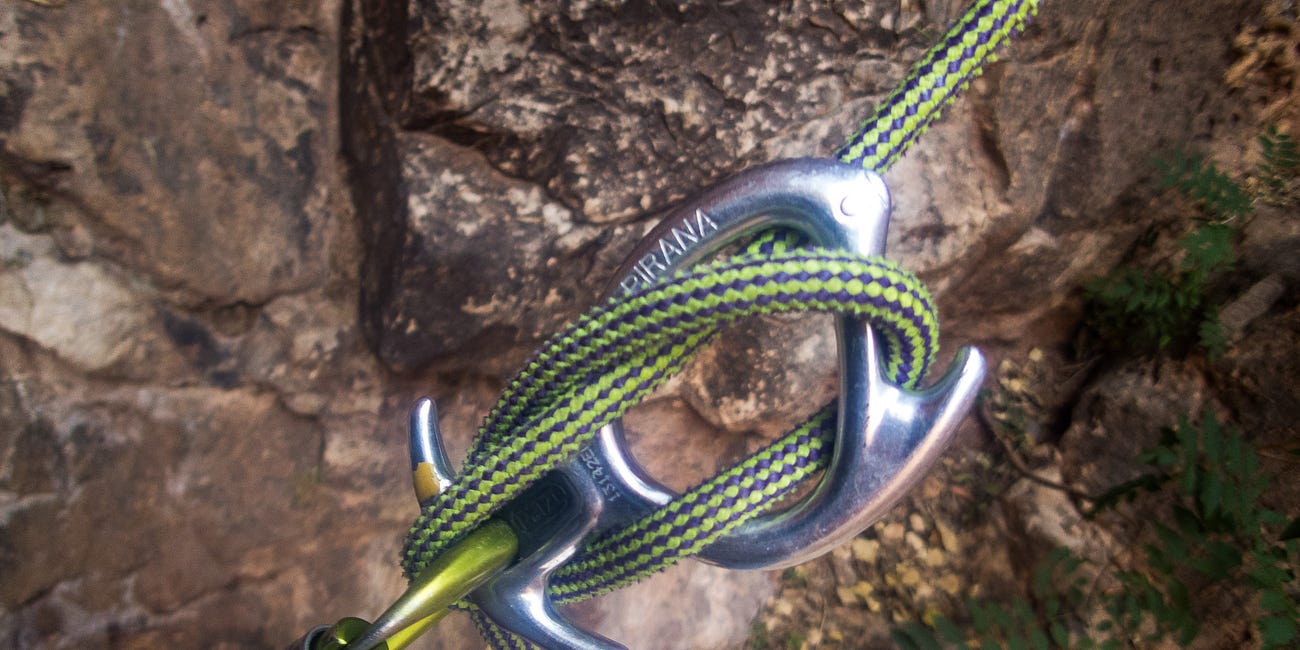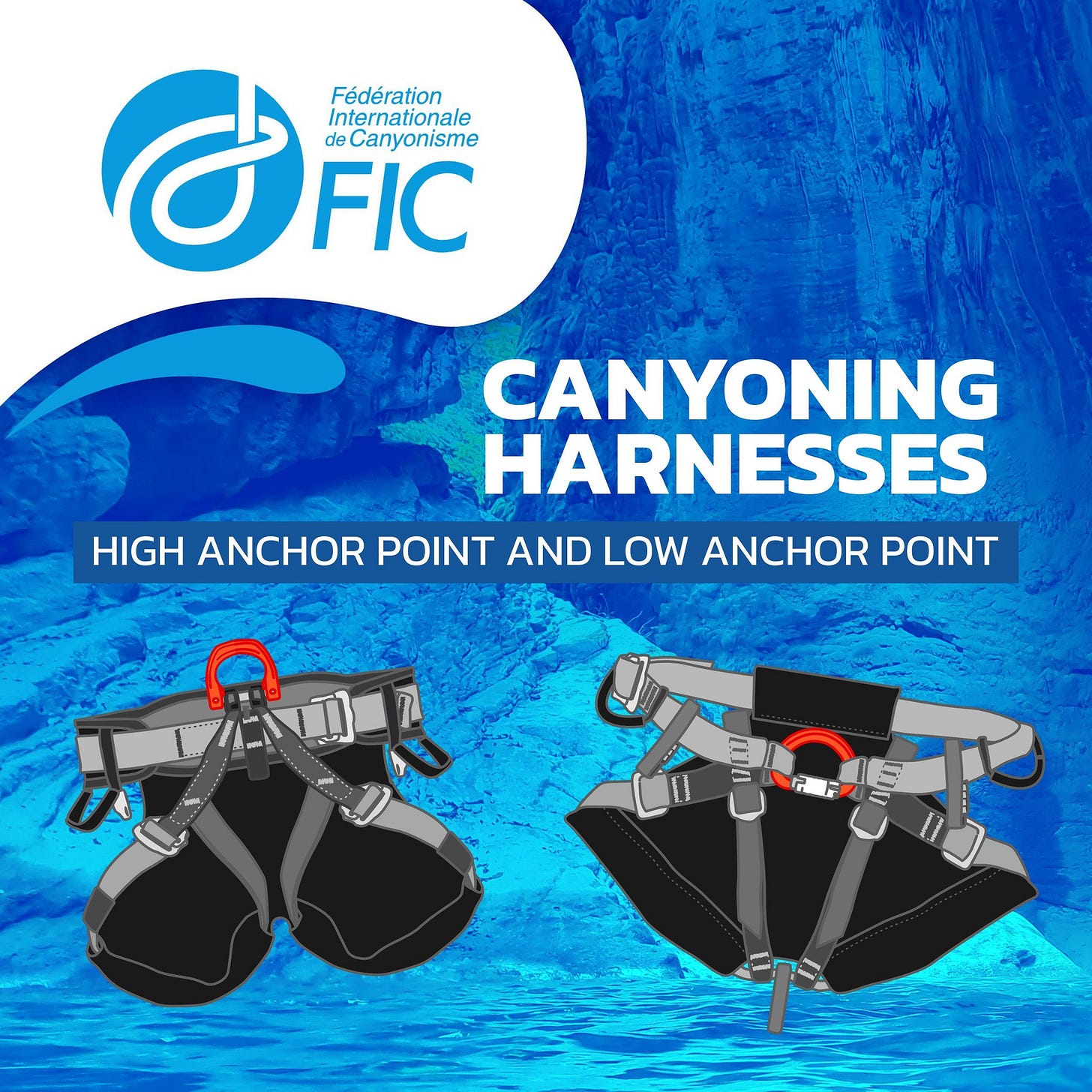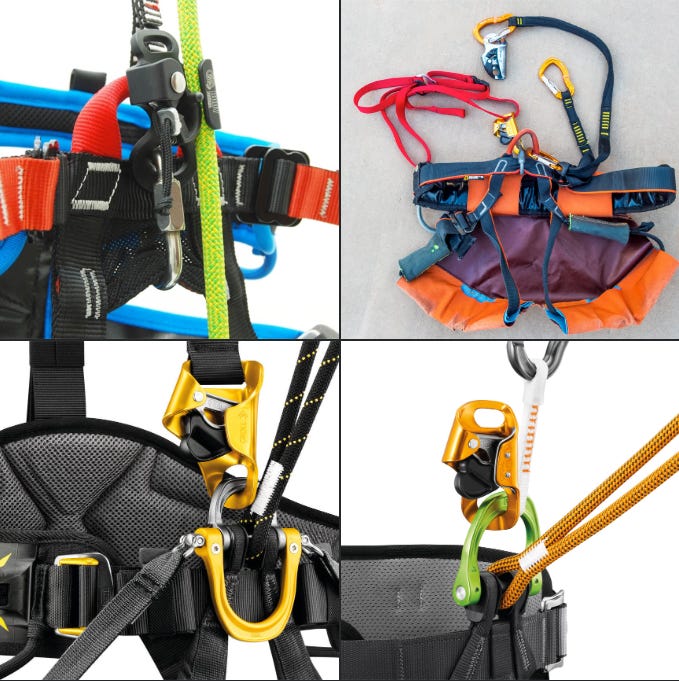After dusting the old Pirana, and adding new ways to rig it for on the fly friction (Old Pirana Learns New Tricks (Part 1), I got reminded of how smooth, compact and functional this thing is. Super easy to take slack while tethered to anchors, quick lock offs under load.
The best designs in canyoneering that I've experienced so far, they seem to aim for multi-purpose, and not to make a single task "easy-to-learn".
Into the weeds of class C gear
So, based on the previous better design premise, I’ve been looking at old gear to see if it can be multi-purpose.
One design hole in the whole class C self rescue setup, is the location and setup of a chest ascender (Croll). Not surprisingly, the old school low point caving harness with a big D carabiner is the cleanest close to perfect setup for that. Croll on one side, rappel device on the other. Side to side. But on high point harnesses, the Croll either goes behind, or in front of the rappel device. For a clean rope path during self rescue and ascension, you want the Croll in front. But in front, it gets in the way of the rappel device. So most people put it on the back. If you know what you are doing, you make an informed decision, and compromise based of preference. But all this is due to the fact that in time sensitive self rescues, you do not have time to shuffle gear. Uninstall rappel devices, and install chest ascenders. All is pre-installed.
Figure 8 in Italian mode…echoes
But...what about if you do not need a chest ascender because your rap device is already one?
That is the case of the good ol Figure 8 device in italian mode. With this technique, you do not need a chest ascender, but you need to uninstall and reinstall your 8 horizontally.
Pirana in SF (self rescue) mode?
Well, it turns out that the old Pirana can be rigged as an ascender without even coming out of your ventral point, or off its carabiner. Watch the video. An old design takes a multipurpose role.
The point?
The point of this exercise (video) was not to get rid of chest ascenders, but to explore if old designs are actually better under the light of old techniques. And understanding that 'better' means more efficient and....why not? More elegant.
Is less more?
After coming up with this SF mode, and locking off with the old “snap down” way, I went and tested these 2 modes on more recent modern horned devices. Some of them, did not work in these modes, some others did. Maybe a new litmus test for rappel devices? Before adding new features, make sure it supports old established modes:
Fast snap back lock off (or equivalent)
SF (self rescue) mode
Next
The footlop hardware in this video was tuned for A/B canyons. It takes time to install and uninstall. Installing a ventral/chest ascender will take even more time. Next vid will be with hardware for class C canyons.
Reference:
Links to posts on FB due to the extensive and useful comments form competent users.
Previous Part 1 post:
Italian 8
https://www.facebook.com/watch/?v=2016433698676590
Harness types: Low point vs. High Point
Full write up here:
https://www.facebook.com/groups/instructionalcanyoneeringresource/posts/24570901442533399/
Chest ascender installations
Full article here:
https://www.facebook.com/groups/instructionalcanyoneeringresource/posts/6826758267374323/








